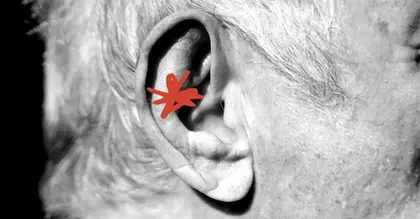
- Alzheimer’s is characterized by a buildup of proteins in the brain, which disrupts their function.
- A new study in fruit flies shows that these proteins may also significantly impact the functioning of other organs.
- The researchers also identified mechanisms that might explain how proteins in the brain can have such wide-reaching effects.
A new study in fruit flies concludes that proteins associated with Alzheimer’s disease not only influence brain Health, but also have effects further afield.
Specifically, the researchers show that certain Alzheimer’s-associated proteins can increase the rate of biological aging and influence fat metabolism and reproduction.
They also created an Alzheimer’s Disease Fly Cell Atlas (AD-FCA) based on their analysis of 219 cell types in flies that express Alzheimer’s-associated proteins in their brains.
The results recently appeared in the journal
Alzheimer’s and other dementias are considered diseases of the mind, and for good reason. The primary symptoms are cognitive changes that grow progressively more severe as time goes on.
For this reason, much of the research into dementia focuses on the brain and nervous system. However, more recently, scientists have begun exploring Alzheimer’s influence on other aspects of the body.
The authors of the new study explain how new evidence hints that the effects of Alzheimer’s extend beyond the nervous system to other parts of the body. “For example,” they write, Alzheimer’s “has been associated with disruptions in the gut microbiota, cardiovascular function, and hormone homeostasis.”
They also explain how
Alzheimer’s disease is characterized by a buildup of faulty proteins in the brain, including amyloid-beta 42 and tau.
As they accumulate, they form so-called amyloid plaques and neurofibrillary tangles, respectively. These proteins interfere with how neurons work and, eventually, kill them.
In their recent study, the researchers used fruit flies. Although fruit flies, as you may have noticed, are quite different from humans, they have already provided many insights into human health.
As the researchers write, “Many molecular pathways are conserved from flies to mammals.”
Medical News Today contacted Gurneet Sawhney, MD, chief neurosurgeon and founder at Neurolife Brain and Spine Clinic, who was not involved in the study. We asked about the usefulness of fly models in neuroscience.
“Fruit fly models are surprisingly valuable in dementia research. While they may seem simplistic,” he explained, “they allow us to study the effects of tau and amyloid at a genetic and cellular level, with faster results and lower complexity than mammalian models.”
“They’ve helped us uncover fundamental mechanisms of neurodegeneration that often translate into mammalian systems later,” he said.
In the current experiment, the scientists used flies with either amyloid or tau buildup and compared them with control flies without protein buildup.
The researchers employed a technique called whole-organism
The authors investigated the impact of tau and amyloid on a range of cell types throughout the flies’ bodies.
Amyloid’s effects on the nervous system
First, they examined the cells of the nervous system, including brain cells, nerve cells in their body, and glial cells (support cells for neurons).
They found that amyloid resulted in the loss of many types of these cells compared with tau and control flies.
In particular, cells involved with the senses, such as vision, hearing, and smell, were impacted most severely. Interestingly, loss of smell is an early sign of Alzheimer’s in humans.
When investigating the mechanism responsible for neuronal cell death, the researchers identified a cluster of neuronal cells that expressed lactate dehydrogenase (LDH). We asked Sawhney why this matters:
“LDH plays a role in cellular energy metabolism,” he explained, “and its dysregulation can indicate tissue stress or damage. In the context of dementia, abnormal LDH activity might reflect broader metabolic dysfunction.”
Importantly, the scientists also identified increased levels of LDH in the brain tissue from humans with Alzheimer’s but not those without the condition. According to Sawhney, this increased LDH may “link neurodegeneration with systemic effects, as this study hints.”
The scientists also showed that cells with elevated LDH had changes in genes that control mitochondrial functions. This is important because mitochondrial dysfunction is linked to oxidative stress, which is an early feature of Alzheimer’s in humans.
Tau’s effects on the body
Next, the scientists moved their attention to the effects of Alzheimer’s proteins on cells other than those of the nervous system. This time, it was tau that produced the most significant changes.
The cell types that were most affected were those involved in fat metabolism, digestion, and reproduction. According to the authors, “The fly fat body is a central storage depot of nutrients and energy reserves.” It carries out a similar role to the liver, immune system, and fat tissue in mammals.
They found that fat droplets in tau flies are large early on, but become smaller and more fragmented as the disease progresses. The researchers then looked at fat cells in a mouse model of Alzheimer’s — the equivalent of the fly’s fat droplets. Again, they found oversized fat cells initially, which grew smaller as the disease progressed.
Interestingly, other scientists have shown that the activity of certain types of fat may influence Alzheimer’s development in humans, too.
Aside from changes in fat metabolism, the researchers noted changes in the behaviour of cells in the gut. In line with this, studies in mice have also shown that tau
Finally, neuronal tau was associated with a reduced ability to reproduce in male flies. In concordance with this, studies show that a decline in sex hormones is associated with an increased risk of Alzheimer’s in humans.
Tau’s effects on cellular aging
According to the authors, changes in fat metabolism, digestion, and reproduction are associated with aging. So, the authors hypothesize that tau’s presence in neurons may increase the speed of aging throughout the rest of the body.
By measuring gene expression and molecular markers associated with fly aging, the scientists found that tau flies, but not amyloid or control flies, aged more quickly.
Overall, they conclude that “Tau expression has a broad impact on peripheral tissues and induces an accelerated aging phenotype.”
To understand how tau in neurons has such wide-ranging effects on the body, the scientists used cell-cell communication analysis, which can identify changes in how the brain communicates with the body.
Compared with amyloid and control flies, tau flies demonstrated thousands of differences in these communication pathways. The cell types showing the greatest differences, once again, were involved with fat metabolism, digestion, and reproduction.
These results suggest that tau in the brain can influence cells in the rest of the body by interfering with brain-body communication.
Investigating further, they found that in neurons containing tau, there were changes in the gene expression that affected how synapses — the junction between nerve cells — are organized.
There were also increased levels of synaptic boutons in the gut of tau flies. The synaptic boutons are swellings on nerves at the synapse that contain neurotransmitters, which pass information from one neuron to another.
In other words, tau in brain cells can influence not only how neurons work and develop within the brain but also how effectively they communicate with more distant tissues.
Overall, the scientists conclude that while amyloid and tau are both toxic, their effects are distinct: Amyloid predominantly affects neurons, and tau has a more widespread impact on the body.
They also found that LDH is elevated in amyloid flies, as well as in mice and humans with Alzheimer’s. They believe this should be an area for future research, as LDH could perhaps be used as an early biomarker for Alzheimer’s.
Research on flies is an important first step in scientific research; it provides direction for future studies on other animals and, eventually, humans.
While we need to interpret the results with caution, taken together, they provide new insights into the widespread effects of Alzheimer’s-associated proteins.
“The focus on the peripheral effects of tau and amyloid stands out in this study,” Sawhney told MNT.
“We often think of these proteins as brain-specific problems, but this work highlights how their impact may extend beyond the central nervous system. That’s an important shift in perspective for understanding the full systemic nature of dementia.”
— Gurneet Sawhney, MD





